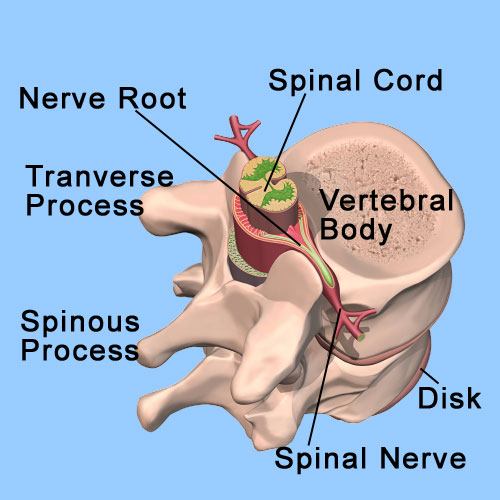ANATOMY: COMPONENTS OF THE SPINE
The “low back” officially begins with the lumbar region of the spine directly below the cervical and thoracic regions and directly above the sacrum. The lumbar vertebrae, L1-L5, are most frequently involved in back pain because these vertebrae carry the most amount of body weight and are subject to the largest forces and stresses along the spine.
The spinal cord (bundle of nerves from the brain) ends at approximately the L1 vertebral level, where it then divides into many different nerve roots that travel to the lower body and legs. This collection of nerve roots is collectively called the “cauda equina,” which means horse’s tail and describes the continuation of the nerve roots at the end of the spinal cord.
Vertebrae
Pedicles
Laminae
Intervertebral Discs
Facet Joints
Ligamentum Flavum
Spinal Cord
Spinal Canal
Contact Us
13710 Olive Boulevard (Primary Office)
Chesterfield, MO 63017
Telephone: 314-469-PAIN (7246)
Fax: 314-469-7251
Exchange: 314-441-6965 (for after-hour Emergencies Only)
Hours:
Monday thru Friday
8:30 AM – 4:30 PM


